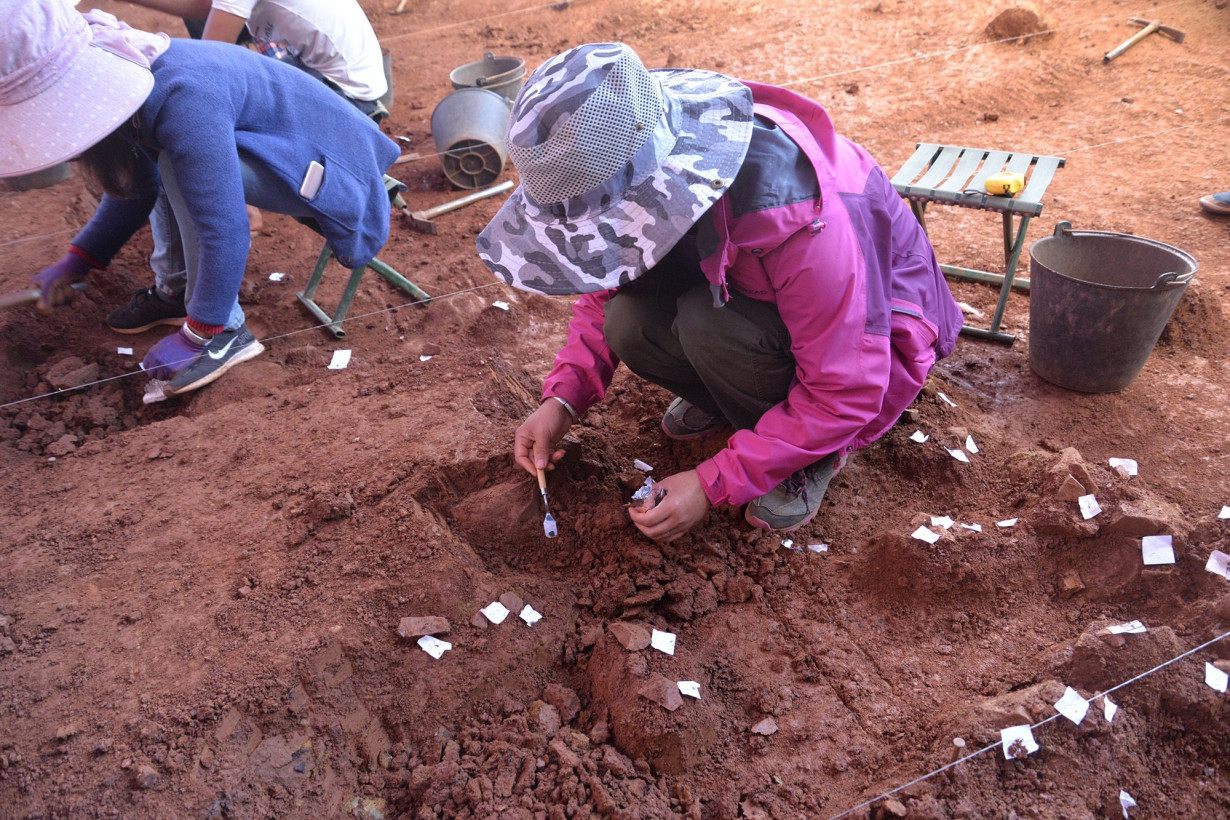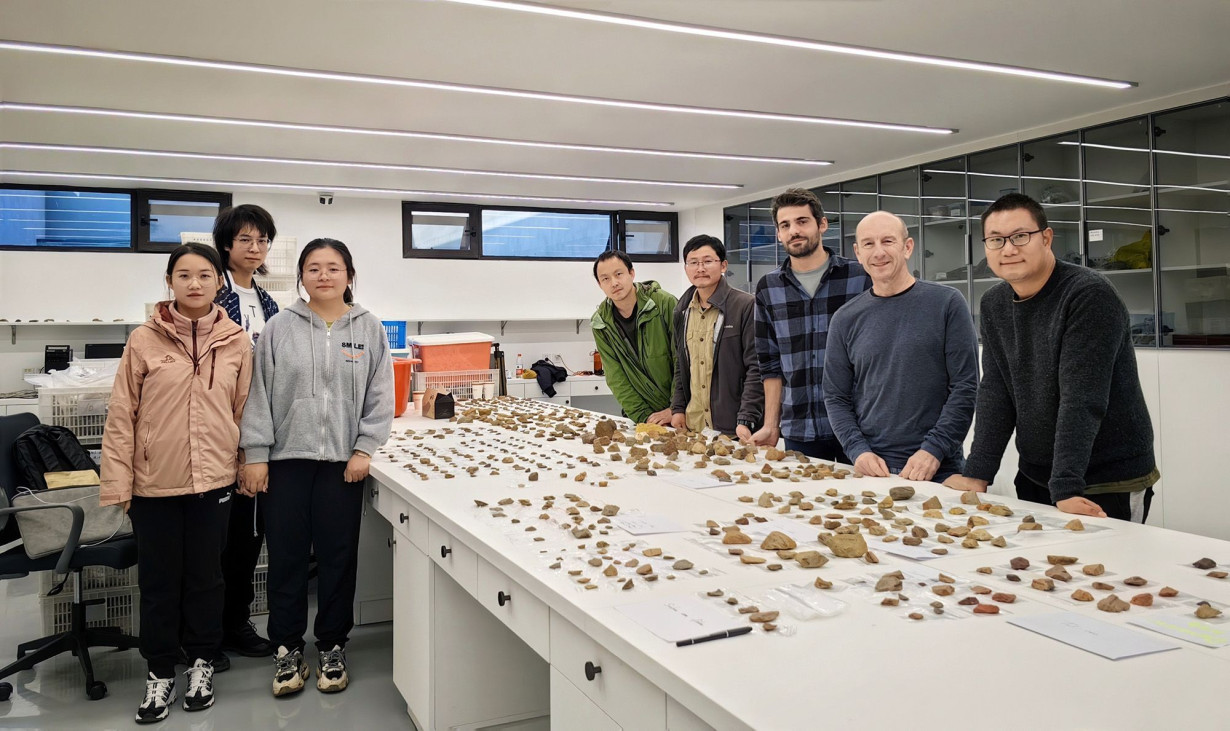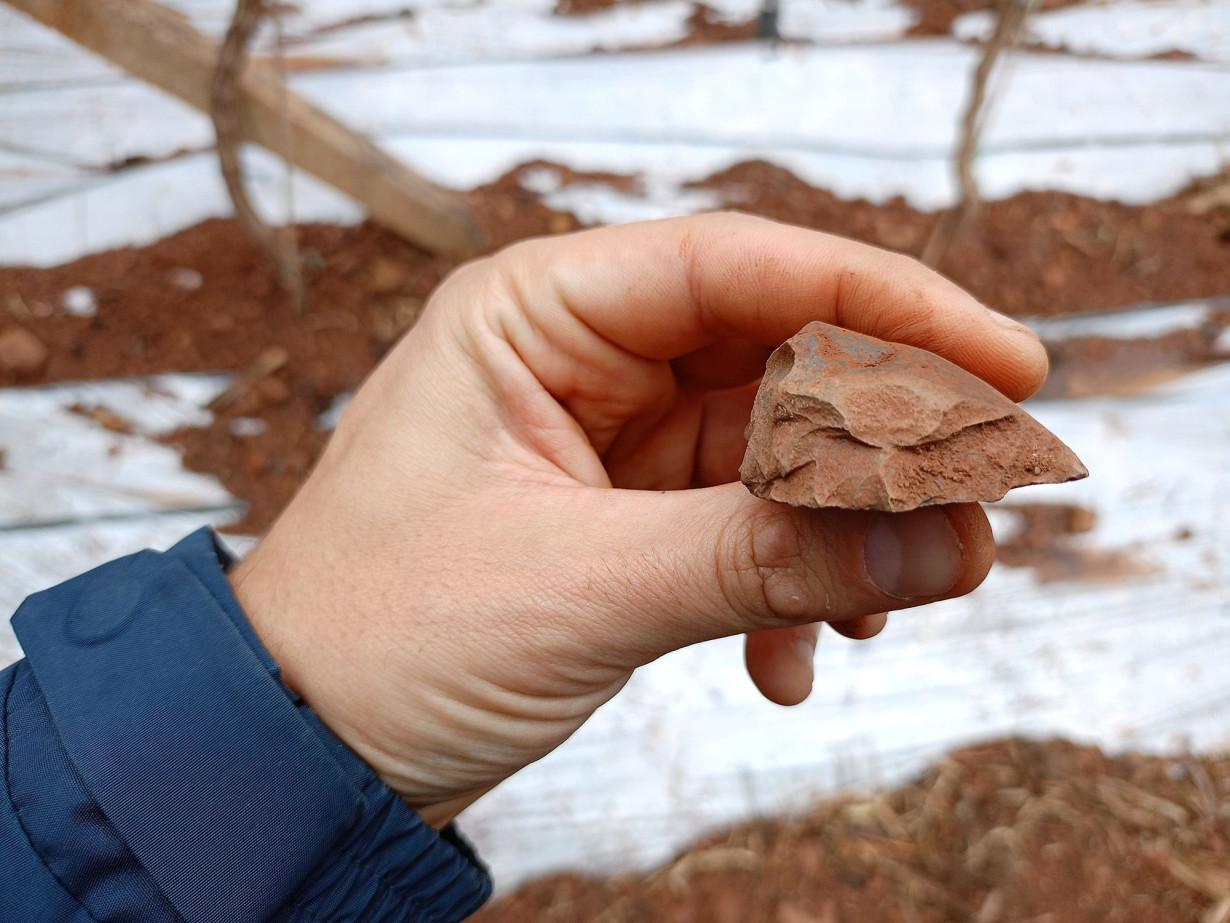(CNN) — Stone tools unearthed in southwest China helped a mysterious group eke out a living in a cold and harsh environment 60,000 to 50,000 years ago.
But whose hands shaped them? The answer could shake up what’s known about human origins during this period of the Stone Age, according to new research.
Archaeologists excavating the Longtan site in Yunnan province, on the southwestern edge of the Tibetan Plateau, uncovered hundreds of stone artifacts from two trenches dug into the region’s reddish, silty clay.

The research team determined many of the tools were crafted in the style known as Quina, which is typically regarded as an archaeological signature of Neanderthals, a species of ancient human. The style, or complex, hasn’t been found in East Asia before, the study published Monday in the journal Proceedings of the National Academy of Sciences said.
“The discovery at the Longtan site is remarkable, as it documents this particular tradition far (at least 7,000 or 8,000 kilometers) from the region traditionally associated with this techno-cultural complex,” study coauthor Davide Delpiano, a postdoctoral fellow in Paleolithic archaeology at the University of Ferrara in Italy, said via email.
Neanderthals roamed Eurasia for some 400,000 years before disappearing 40,000 years ago, but there is no evidence of their remains east of the Altai Mountains in southern Siberia.
Neanderthal bones and skeletons have previously been found alongside Quina stone tools at several sites in Western Europe including at the namesake site of La Quina in southwest France. Quina is one of a number of stone tool styles associated with Neanderthals that archaeologists call Mousterian culture.

The unprecedented discovery at Longtan had “significant implications,” Delpiano said, raising two competing possibilities. Neanderthals could have migrated east and reached what’s now China, or a different species of ancient human possibly made stone tools uncannily similar to those being made in Europe during this period known as the Middle Paleolithic.
Stone tools with far-reaching implications
The tool set unearthed at Longtan in 2019 and 2020 include scrapers, used to work hides or wood with one sharp side, stone points that might have been attached to wooden spears, and tools that had notches a bit like a saw.
In Europe, Neanderthals used Quina stone tools during a dry and cold period 60,000 to 50,000 years ago in a landscape of open woodland. The tools would have helped Neanderthals hunt migrating herds of reindeer, giant deer, horses and bison, according to the study.
Quina tools typically had a long period of use and were often retouched and recycled — suggesting they were a response to patchy resources and a highly mobile lifestyle, the researchers wrote.
Analysis of ancient pollen grains from Longtan revealed the climate and environment would have been similar in southwestern China to that of Europe. However, the authors found no animal remains at the site, so it’s not known whether the humans who lived there hunted similar animals, they said.
“The Quina package represents an adaptation to highly developed mobility strategies: these artifacts were designed to last a long time, as nomadic human groups were forced to search for resources that, due to increasingly harsh climatic conditions, were becoming scarcer,” Delpiano said.
It was possible Neanderthals made it as far east as southwest China, or perhaps they encountered other human species in their home territory, an interaction that allowed their stone tool technology to spread eastward, he said.
Fossils from Denisova Cave in the Altai Mountains show Neanderthals lived there about 200,000 years ago at roughly the same time as a sister species known as the Denisovans, who are thought to have lived throughout Asia.
The study authors added that skulls found in Xuchang in central China’s Henan province also displayed some Neanderthal features, which “might indicate that human interactions occurred between the West and the East.”
“I would not be surprised if Neanderthals made occasional incursions into Chinese territory.
That said, the issue is that we currently lack this technological package in the rest of Asia, leaving us without a clear ‘breadcrumb trail’ to connect in a hypothetical migration path,” Delpiano said.
Neanderthals vs. Denisovans
An equally plausible explanation put forward by the study was that the hominins who once called Longtan home — perhaps Denisovans or another unknown species — separately developed the same style of stone tool as Neanderthals in response to the similarly harsh environment.
“While we cannot yet confirm the presence of Neanderthals in China — who were responsible for the Middle Paleolithic (tools) in Europe and Central Asia — we know that their ‘sister’ species, the Denisovans, were present in the region,” he said.
“It is thus tentatively possible to attribute these innovations and ecological adaptations to them,” he said.
“Starting from a base of knowledge — a technological foundation common to European Neanderthals — local groups might have ‘reinvented’ this tool-making tradition because it was well-suited to their ecological conditions,” Delpiano said.
Dongju Zhang, an archaeologist and professor at China’s Lanzhou University who wasn’t involved in the study, said both hypotheses were plausible, if speculative. More concrete evidence was needed to understand who made the tools, she said.
“To me, it is far too early to give an explanation of the producers of this style in Longtan. I am looking forward to seeing more new finds and more certain human fossil or ancient DNA or paleoproteomic (ancient protein) evidences in East Asia,” she said via email.
The only way to prove Neanderthals lived in what’s now China is for paleontologists working there to find a Neanderthal fossil in China, said John Shea, a professor of anthropology at Stony Brook University in New York.
“Stone tools are not ID cards,” he said.
The new study adds to a body of unresolved questions about how the human story unfolded in Asia before the large-scale arrival of our own species, Homo sapiens, in the region.
“For me, the significance of this paper is that it contributes to an ever-growing list of recent discoveries that highlight Eastern and Southeastern Asia as hotspots for human origins research,” said Ben Utting, a postdoctoral fellow in the department of anthropology at the Smithsonian’s National Museum of Natural History in Washington, DC.
“While archaeologists and anthropologists long considered Eastern and Southeastern Asia to be cultural ‘backwaters,’ these discoveries are helping to reverse that narrative and demonstrate that the humans living in these regions were every bit as behaviorally dynamic and complex as humans living elsewhere at the same time.”
The-CNN-Wire
™ & © 2025 Cable News Network, Inc., a Warner Bros. Discovery Company. All rights reserved.

 Trump has begun another trade war. Here's a timeline of how we got here
Trump has begun another trade war. Here's a timeline of how we got here
 Canada's leader laments lost friendship with US in town that sheltered stranded Americans after 9/11
Canada's leader laments lost friendship with US in town that sheltered stranded Americans after 9/11
 Chinese EV giant BYD's fourth-quarter profit leaps 73%
Chinese EV giant BYD's fourth-quarter profit leaps 73%
 You're an American in another land? Prepare to talk about the why and how of Trump 2.0
You're an American in another land? Prepare to talk about the why and how of Trump 2.0
 Chalk talk: Star power, top teams and No. 5 seeds headline the women's March Madness Sweet 16
Chalk talk: Star power, top teams and No. 5 seeds headline the women's March Madness Sweet 16
 Purdue returns to Sweet 16 with 76-62 win over McNeese in March Madness
Purdue returns to Sweet 16 with 76-62 win over McNeese in March Madness








